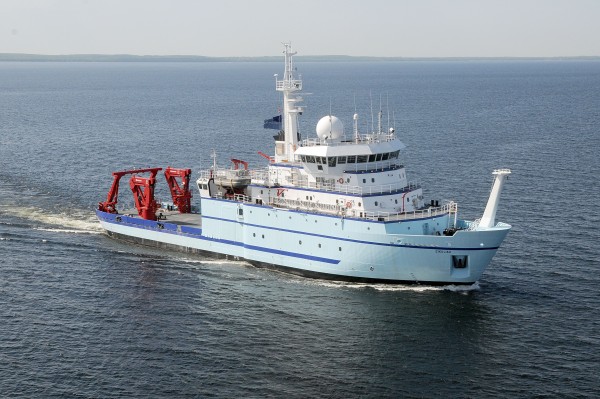The following is the text of a news release from the University of Alaska Fairbanks:
(FAIRBANKS, Alaska) — The University of Alaska Fairbanks will welcome the research vessel Sikuliaq home to Alaska waters with a series of public events and tours as it makes its way to its home port in Seward.
The first stop will be in Ketchikan. A community reception is scheduled for Feb. 10 from 4:30-6:30 p.m. at Fish Pirate’s Saloon located at 76 Front St. Ship tours will be held from 1-4 p.m. starting at the Berth III visitor information center at 417 Water St.
On Feb. 17, the Sikuliaq will visit Juneau. Ship tours will be from 1-4:30 p.m. at the AJ Dock, 1110 Jacobsen Drive. A community reception will be held from 5:30–7:30 p.m. at the Twisted Fish, 550 Franklin St.
A commissioning ceremony and community reception in Seward are scheduled for March 7 beginning at 11 a.m. at the Dale R. Lindsey Terminal. Ship tours in Seward will be available the afternoons of March 6, 7 and 8 starting at 1 p.m. each day.
To sign up for a ship tour or RSVP for a community reception, visit the Sikuliaq website, www.sikuliaq.alaska.edu/alaskahomecoming. Alaskans can also follow the Sikuliaq’s homecoming and share their own Sikuliaq experiences on Facebook at http://facebook.com/rvsikuliaq or elsewhere in the social web using #sikuliaq.
The Sikuliaq — pronounced see-KOO-lee-auk and translated from Inupiaq as “young sea ice” — is a new 261-foot oceanographic research vessel. The ship is owned by the National Science Foundation and operated by the University of Alaska Fairbanks, a leader in Arctic research.
Sikuliaq can cut through 2.5 feet of first-year sea ice and is the only ice-capable vessel in the United States academic research fleet. The ship is outfitted with state-of-the-art equipment to bring scientists to previously inaccessible ice-choked polar regions of the globe. The Sikuliaq will be a powerful vehicle for advancing polar and subpolar research when it begins scientific operations this summer.
UAF scientists conducting ocean research in Alaska have been advocating for a vessel specifically designed for Arctic operations since the first proposal was submitted in 1973. Those years of preparation paid off in 2009 when the NSF announced it would construct the vessel with funding from the American Recovery and Reinvestment Act.
Sikuliaq accommodates up to 24 scientists and students, including those with disabilities, providing scientists from across the nation and around the world an opportunity to learn more about marine life, our oceans, our atmosphere and our global climate.

